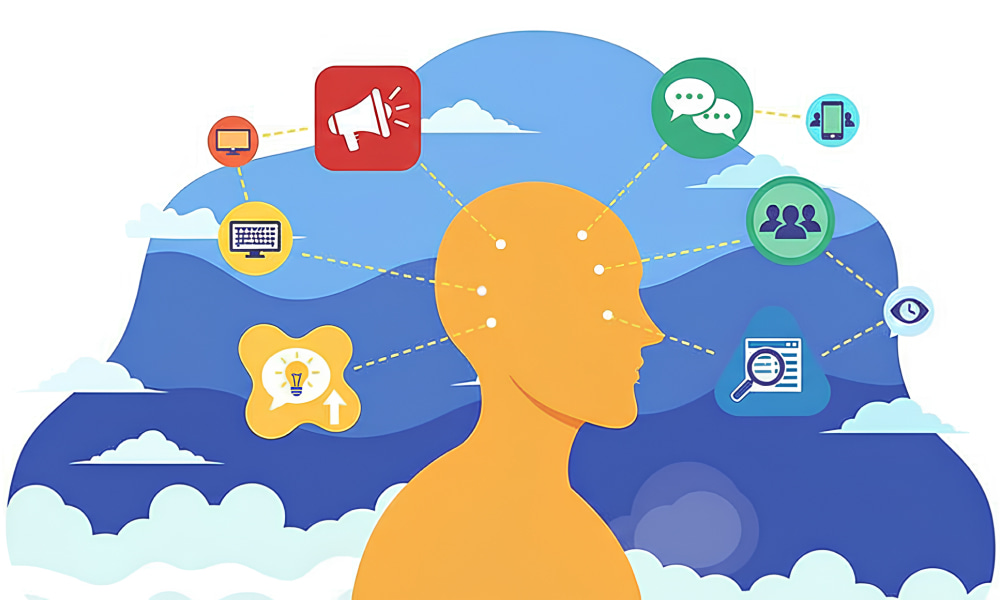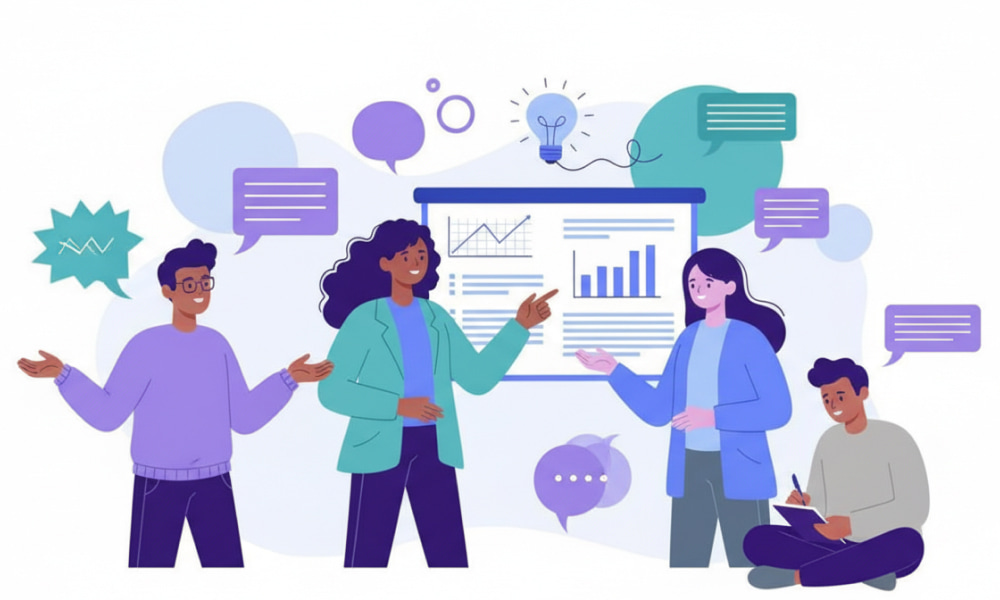Effective Communication Styles Quiz Online
New Updates



Take Communication Styles Assessment
Get StartedHow Do You Connect With Others? Take Our Communication Style Quiz!
Collaborative work and meaningful relationships hinge on how messages are framed, delivered, and interpreted. People bring unique histories, emotional bandwidth, and cognitive habits to every exchange, which subtly influence tone, timing, and trust. Clarity does not emerge by accident; it arises from conscious choices about words, pacing, and the mediums we pick for nuanced or time‑sensitive topics. Careful listening, thoughtful pausing, and explicit signposting act like navigational beacons when stakes are high or ambiguity is thick.
Across relationships and teams, the spectrum of communication styles influences tone, trust, and timing. Leaders who narrate intent, check for understanding, and invite pushback reduce misinterpretations that otherwise calcify into friction. The more consistently people translate thoughts into crisp, testable statements, the easier it becomes to coordinate action and avoid costly rework. Over time, groups evolve shared rituals that protect focus while enabling quick course corrections.
When people articulate expectations, clear language aligns with communication preferences that honor context and personality. Some colleagues crave concise bullet points and decisive handoffs, while others seek exploratory dialogue before converging on commitments. Establishing ground rules for response windows, escalation triggers, and meeting hygiene creates a dependable cadence that supports both speed and psychological safety. In turn, morale rises as contributors feel seen, heard, and effectively supported.

The Core Dimensions and the Four Archetypes
Most frameworks cluster behaviors along axes like directness, emotional expressiveness, and power dynamics. Many field-tested models converge on four big buckets, and the phrase 4 types of communication styles often anchors that discussion for busy practitioners. Rather than freezing people into rigid boxes, these archetypes function as lenses, helping teammates diagnose friction, select better channels, and adjust tempo without abandoning authenticity. The goal is adaptability, not mimicry, so that message and method fit the moment.
| Archetype | Core intent | Common signals | Best use | Watch outs |
|---|---|---|---|---|
| Assertive | Balance clarity with respect | Direct statements, open posture, clear asks | Decision making, prioritization, feedback | May feel brisk if emotional context is ignored |
| Passive | Preserve harmony and avoid conflict | Hesitant phrasing, deference, few requests | Listening, discovery, de‑escalation | Needs can go unmet; ambiguity can linger |
| Aggressive | Win quickly and assert control | Interruptions, high volume, strong directives | Crisis response, urgent risk containment | Trust erosion, limited idea flow |
| Passive‑Aggressive | Express frustration indirectly | Sarcasm, delays, mixed messages | Rarely optimal; signals unresolved issues | Breeds confusion and resentment |
To compare the archetypes across contexts, focus on intent, channel, and the impact on shared goals. Beyond labels, educators sometimes refer to types communication styles to emphasize shared traits across the spectrum. That framing makes it easier to anticipate how a tendency will land during negotiations, code reviews, or design critiques, particularly when pressure mounts and time is scarce.
Skillful communicators flex between modes as stakes, relationships, and information quality shift. For real-world planning, managers map different styles of communication to task complexity, time pressure, and stakeholder risk. The most effective teams normalize meta‑conversations about how they will disagree, how they will decide, and how they will document decisions so future readers can reconstruct intent without guesswork.
Benefits and Impact in Communication Styles Quiz
Organizations function like living systems, and their signals must travel cleanly for the organism to thrive. Productivity climbs when norms around communication styles workplace reduce ambiguity about channels, cadence, and escalation paths. With crisp handoffs and explicit owners, cycle time falls while quality rises, because contributors can focus on substance rather than decoding vague requests. The result is fewer surprises, faster iteration, and steadier momentum toward measurable outcomes. Modern work spans disciplines, time zones, and cultures, which compounds the risk of misalignment. On cross-functional initiatives, alignment improves as teams document communication styles at work alongside decision rights and role clarity. When these agreements are visible, onboarding accelerates and accountability sharpens without inviting micromanagement. Over months, the compound interest of structured dialogue shows up in better delivery and calmer retrospectives.
- Establish transparent channels for status, risks, and decisions.
- Adopt shared vocabulary for priorities, estimates, and trade‑offs.
- Design feedback rituals that protect dignity while sharpening output.
- Publish lightweight playbooks so norms survive personnel changes.
Performance benefits are real, but so are people benefits, including inclusion and well‑being. Stronger retention often follows when leaders curate workplace communication styles that support psychological safety and equitable airtime. When meetings rotate facilitators and written briefs precede debates, quieter voices gain space to contribute, and groupthink loses its grip. Over time, these practices transform collaboration from fragile to anti‑fragile.
Assessments, Quizzes, and Self‑Insight
Self‑awareness is a force multiplier, because you cannot refine what you cannot observe. Before tweaking habits, professionals benefit from a calibrated communication style assessment that distinguishes trait patterns from situational responses. Good instruments illuminate triggers, blind spots, and default reactions under stress, helping people separate identity from habit so change feels practical rather than threatening. The most useful outputs translate into concrete experiments for the next meeting, call, or message.
Short, reflective exercises can complement deeper diagnostics between coaching sessions. For lighter-weight self-checks, a brief communication style quiz can surface tendencies that warrant deliberate practice. Pair quick scoring with journaling prompts, peer feedback, and calendar nudges so insights convert into micro‑behaviors you can test in real time. Over weeks, those small adjustments alter team perception in durable, measurable ways.
Building Skills Through Practice and Training
Lasting improvement depends on repetitions, feedback, and varied scenarios. Practice routines that build clarity, curiosity, and cadence foster effective communication styles across diverse settings. Rotate between role‑plays, written briefs, and asynchronous debates to exercise multiple muscles, from precision to empathy to synthesis. Consistency matters, but so does novelty, so weave in fresh constraints that challenge complacency. Group learning accelerates progress when it is social, safe, and specific. Teams sustain progress with recurring labs, and structured communication style training reinforces small behaviors that compound over time. Cohorts can swap playbooks, annotate transcripts, and rehearse difficult conversations until the moves feel natural. As fluency grows, conflict becomes data, not drama, and debate sharpens ideas rather than fraying relationships.

- Rehearse request framing using Who/What/Why/When templates.
- Run listening drills that separate facts, interpretations, and feelings.
- Use heat‑map feedback after meetings to tune airtime and pacing.
- Adopt retros with one behavior to stop, start, and continue.
Momentum sticks when reflection meets action in quick loops. To keep momentum, cohort feedback should spotlight the chosen communication style in play while encouraging experiments with alternatives. Leaders can model vulnerability by narrating their own adjustments, which normalizes learning and reduces shame around missteps. Over quarters, these routines fortify trust as much as they enhance throughput.
Leadership, Conflict, and Complex Dynamics
Influence scales when messaging aligns with mission, incentives, and audience sophistication. High-trust cultures emerge when executives model adaptive leadership communication styles during planning, crisis response, and retrospective reviews. By pacing information, staging decisions, and inviting dissent early, senior teams protect focus while preserving optionality. This steadiness reduces rumor velocity and keeps attention anchored to what matters most.
Frictions are inevitable, so the question is how quickly a team metabolizes them without personalizing disagreement. When frustrations simmer, leaders must recognize a passive aggressive communication style early and reset expectations through candid, behavior-based agreements. Clear norms for escalation, mediation, and repair transform conflict into a renewable source of learning. In that environment, people feel safe surfacing hard truths before they metastasize into costly surprises.
Take Communication Styles Assessment
Get StartedFrequently Asked Questions
-
What are the main goals of improving how we communicate?
The goals include faster alignment, reduced rework, healthier relationships, and clearer decisions. By setting norms for channels, cadence, and decision documentation, teams protect focus and limit ambiguity. Over time, these practices translate into better outcomes and calmer collaboration.
-
How can I adapt my approach when I work with someone very different from me?
Observe their cues, ask explicit questions about preferences, and mirror formats that help them process information. Offer summaries, confirm next steps, and choose channels that fit the moment. Flexibility shows respect while keeping the work moving.
-
What is the quickest way to get better at difficult conversations?
Prepare with a written brief that states intent, facts, impact, and a proposed path forward. Rehearse openings, anticipate reactions, and decide in advance what you will ask, accept, or decline. Afterward, debrief with a trusted peer to capture lessons.
-
How do distributed or hybrid teams keep misunderstandings low?
They codify norms, favor written artifacts for complex topics, and use clear subject lines and summaries. They also schedule overlap hours, rotate facilitation, and document decisions where everyone can find them. These routines shrink time zone friction and memory gaps.
-
What metrics indicate our conversations are getting healthier?
Look for lowered cycle time from idea to decision, fewer surprises in retros, faster conflict resolution, and improved engagement scores. Qualitatively, note whether meetings end with crisp owners and deadlines, and whether debates feel probing yet respectful. Consistent improvements across these signals suggest durable progress.
 Using Communication Style Quiz: the Ultimate Guide
Using Communication Style Quiz: the Ultimate Guide